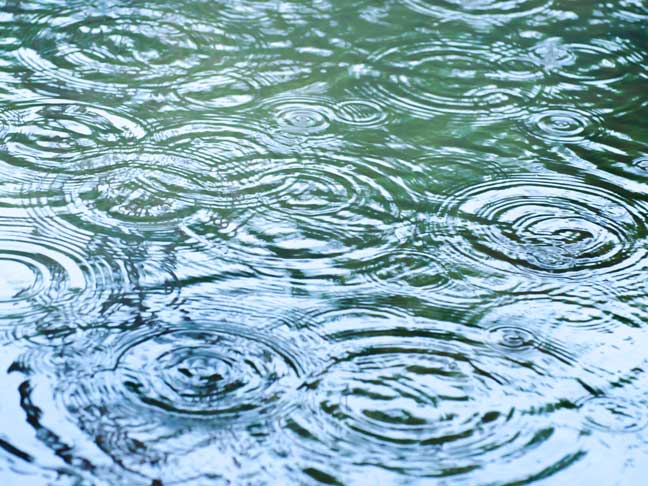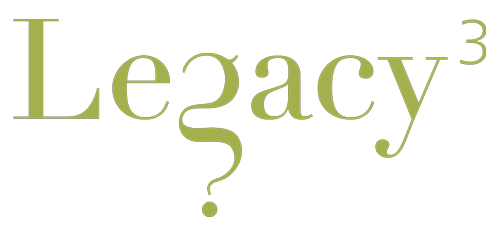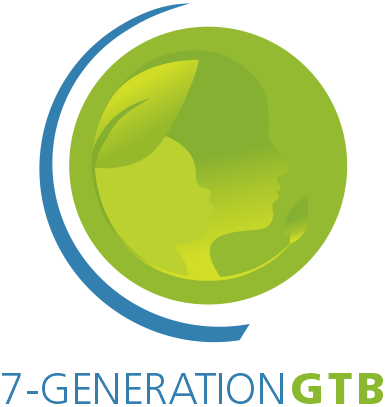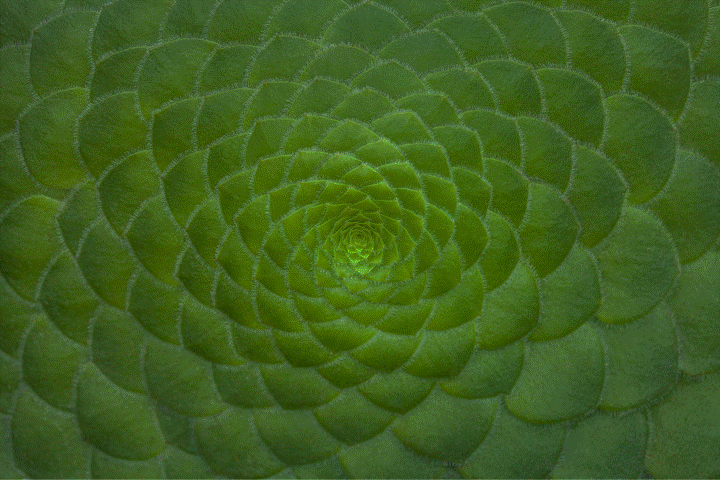
7-GENERATION IN THE GTB
This is y/our Legacy Project – the Legacy Project of our time.
Note: Register to view session recordings from the
In a time of unravelling and uncertainty,
7-Generation GTB (Greater Tkaronto Bioregion) is about social regeneration (generations in community) and ecological regeneration (community in bioregion).
This work, rooted in both intergenerational and bioregional dynamics, ripples out through Circles of Activity as we create parallel structures and processes across silos in the context of a long-term vision drawing on both Western science and Indigenous knowledge.
Following on the legacy of David Crombie's 1992 Regeneration report, the GTB can both lead and learn from other bioregions around the world. We're connecting with Joe Brewer's work in Barichara, Colombia – a north/south learning opportunity – and the Design School for Regenerating Earth to live into the powerful story of Bioregional Earth (BE).
Once upon a time… as the world was in crisis, generations came together, grounded by the land, to #ChangeTheStory…
This is the difficult yet vital systems complexity work of our time.
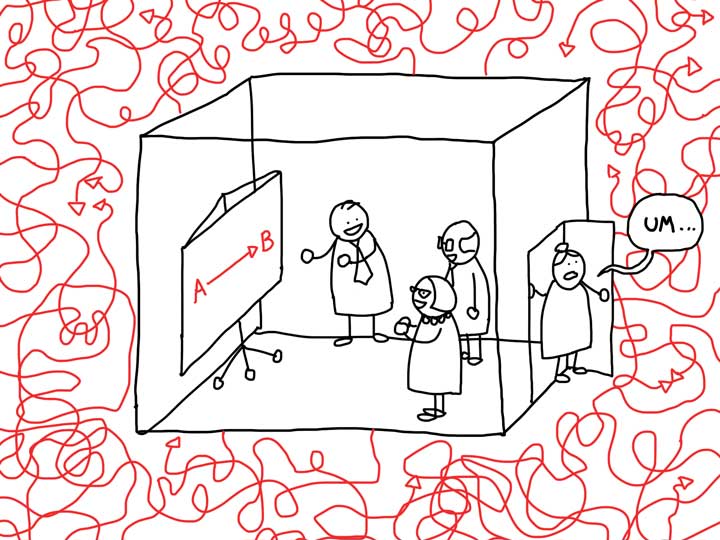
The blunt fact is that we're in a polycrisis – converging climate, environmental, economic, political, technological, social, health crises. We can't stay in an isolated room at a white board using a simplistic, straight-line problem/solution mindset and ignore the messy, complex reality just outside the door.
From the Intergovernmental Science-Policy Platform on Biodiversity and Ecosystem Services (2019): "We require transformative change – a fundamental, system-wide reorganization across technological, economic and social factors, including paradigms, goals, and values."
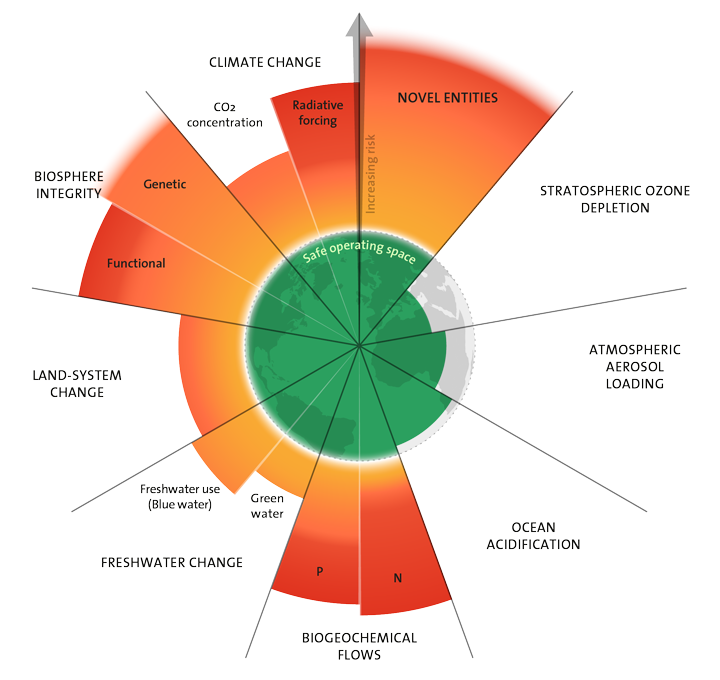
We've crossed six of the nine Planetary Boundaries. Explained one scientist, "Mother Earth has given us nine planetary credit cards to assist in our development. We've charged six of those nine credit cards to the hilt, and are pushing the credit limit on two others… Mother Nature abides by the laws of physics, and defaulting on just one of the loans we've taken out could be catastrophic."
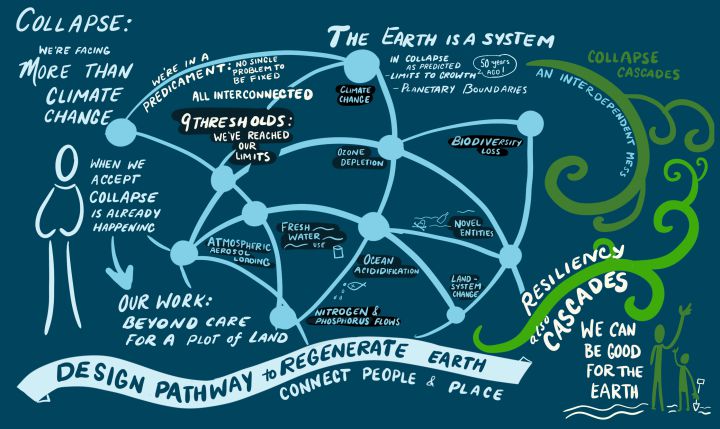 We're working with visual storyteller Patricia Kambitsch as we tell the story of
We're working with visual storyteller Patricia Kambitsch as we tell the story of
Says Thomas Homer-Dixon in Commanding Hope: The Power We Have to Renew a World in Peril: "Anyone who grasps the severity of humanity's predicament and tries to figure out how we might respond with something like a new organization, technology, or social movement to make things better – not just for ourselves narrowly, but for all of humanity – confronts an unforgiving conundrum, which I've come to call the enough vs. feasible dilemma. On one hand, changes that would be enough to make a real difference – that would genuinely reduce the danger humanity faces if they were implemented – don't appear to be feasible, in the sense that our societies aren't likely to implement them, because of existing political, economic, social, or technological roadblocks. On the other hand, changes that do currently appear feasible won't be enough."
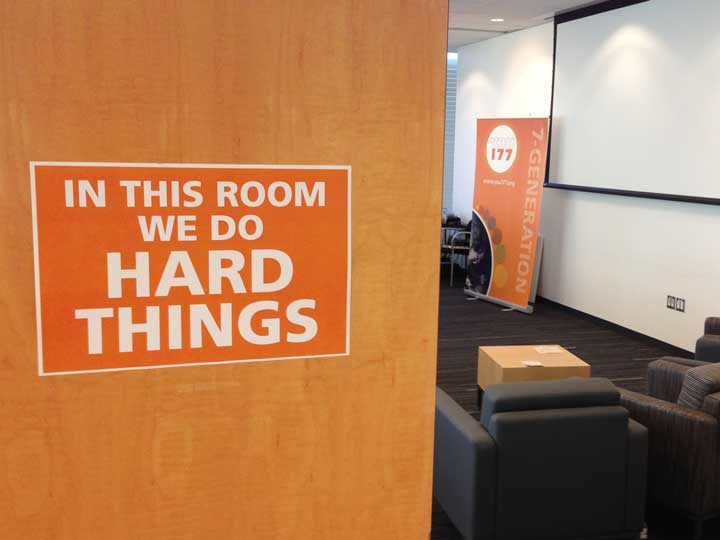
To face enough vs. feasible head on – in a way that meets the polycrisis at a reasonable scale, puts life at the center of every decision and action, and gives humanity a chance to navigate through – we need social collaboration, especially across generations, in bioregions scale-linked into planetary processes.
In other words, we need to hold each other's hand and start where we are – in our place.
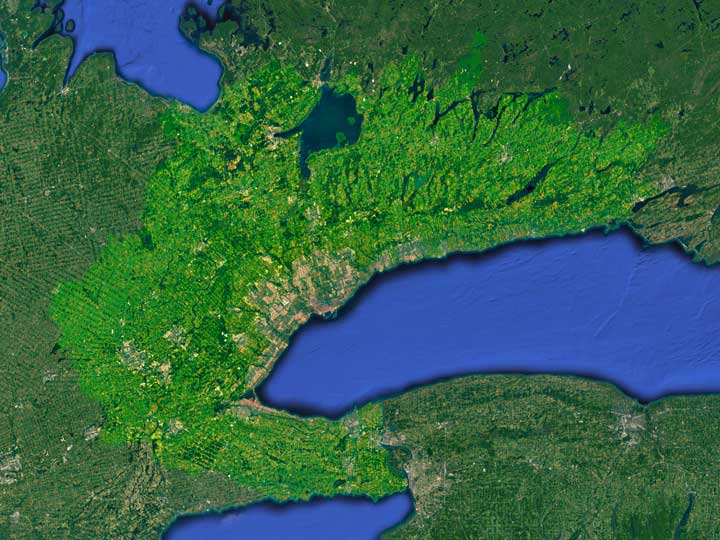
The GTB (Greater Tkaronto Bioregion) has a fuzzy boundary – about
The bioregion was originally defined by David Crombie in his seminal 1992 Regeneration report, and has evolved as local understanding evolves. By giving shape to the bioregion, and encouraging ongoing discussion in that context, people can find a powerful shared identity and take grounded action.
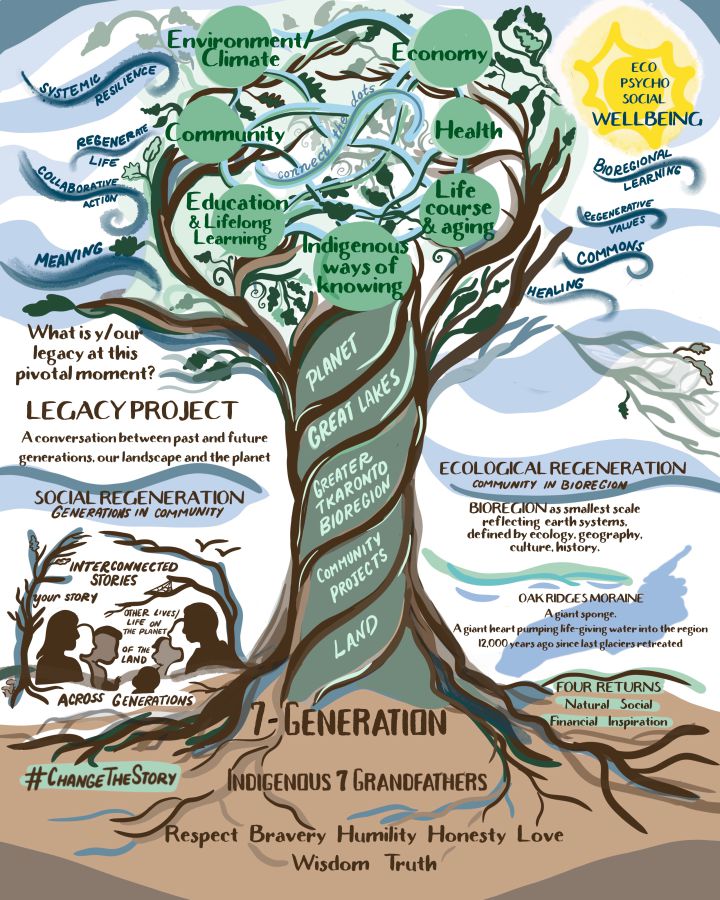
Metaphorically, we talk about growing a Tree of Life through
We ask a big question: What's y/our legacy at this pivotal moment in human history?
We're looking at both social regeneration and ecological regeneration (left and right of tree trunk) to #ChangeTheStory (bottom left) for ecopsychosocial wellbeing (top right) – ecological (and by extension economic) integrity, personal wholeness, and social coherence.
The 7-Generation work is rooted literally in the land (bottom) and figuratively in the Indigenous concept of holistic, long-term thinking across seven generations. 7-Generation also reflects the modern context of a historic demographic shift. For the first time in history, as more people live longer, we will personally know (in our family and/or community) seven generations – our own generation; three before us (parents, grandparents, great-grandparents); and three after us (children, grandchildren, great-grandchildren). There is comfort, insight, and power in this ability to "touch time," to connect more generations than ever before.
The fractal scale-linking from a plot of land to the whole planet flows up the tree trunk, with a bioregion at the center of it all. A bioregion – defined by geology, ecology, and culture (including Indigenous history) – is the smallest actionable scale for long-term impact. It's our life place – the place in which you live your life and which gives you life. What happens on the land through community projects must be coherent within the bioregion; and then what happens in the GTB connects into what's happening in the Great Lakes Basin which flows into planetary processes. The bioregion is the difference that can make a difference.
7-Generation GTB connects-the-dots across seven broad themes (top of tree):
environment and climate change, economy, community, health, education and lifelong learning, life course and aging, Indigenous worldviews and knowledge. Everything is connected to everything else.
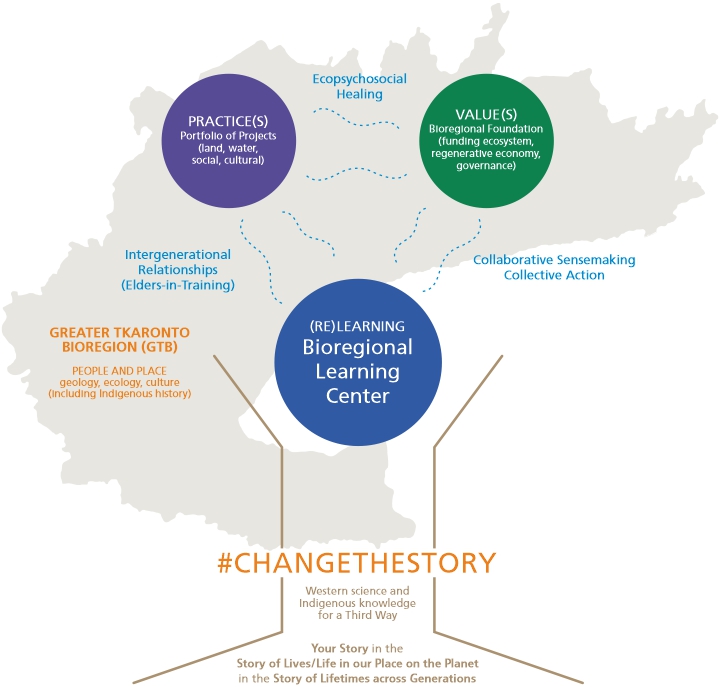
Practically speaking, through 7-Generation GTB we're creating parallel structures and processes designed to be fractally scale-linked into a story of Bioregional Earth for more meaningful impact and resilience in the face of increasing risks.
The
Bioregional Learning Center (BLC) is the keystone structure, where we (re)learn how to live in our place. The BLC is a community-facing learning lab for real-world resilience and inspiration, as well as social and ecological regeneration. It creates a coherent story of place and a shared bioregional identity. The BLC connects across sectors – from water, food, and energy to health, culture, livelihoods – and can do integrated modelling, simulations, and planning.
A
Portfolio of Projects brings together fragmented, decontextualized activities in the bioregion to enable a holistic evaluation of needs and priorities for integrated landscape planning and multisolving.
The
Bioregional Foundation models regenerative value flow and governance in a bioregion through a bioregional funding ecosystem.
Three processes flow between the structures: intergenerational relationships through which we all see ourselves as elders-in-training reaching for collective wisdom; collaborative sensemaking and collective action; and ecopsychosocial healing/wellbeing.
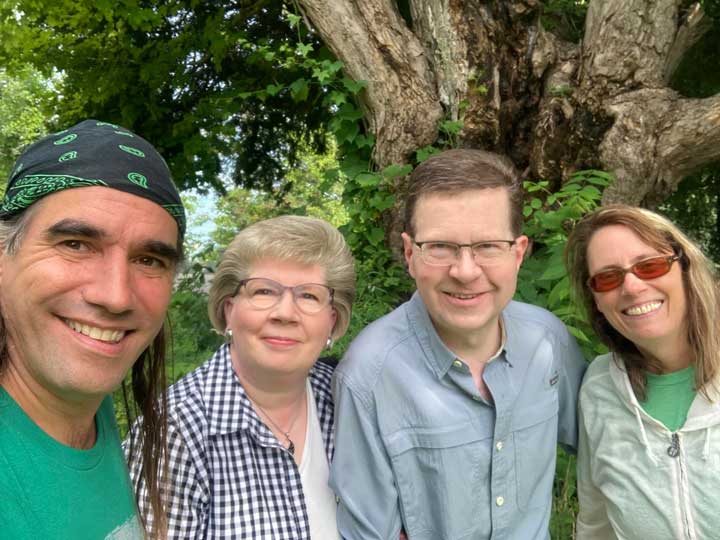
This systems complexity work is a new kind of "infrastructure" project. It's building the appropriate social and physical infrastructure over a time span of at least a couple of decades. It requires a strategic core team that centers integrity, has the experience to hold the process effectively, synthesizes information to nurture evolving structures and processes while reaching for wisdom, manages risk, moves between and beyond siloed thinking to holism, and helps build a meaning-making bridge to #ChangeTheStory. This is not easy or short-term work.
The Legacy Project – led by Founder Susan V. Bosak and Executive Director Brian Puppa – is the core team for
Susan Bosak and Brian Puppa are working closely with Joe Brewer and Penny Heiple, co-founders of the Design School for Regenerating Earth. They all co-hosted the 7-Generation Bioregional Earth Summit to birth and steward the larger story of Bioregional Earth.
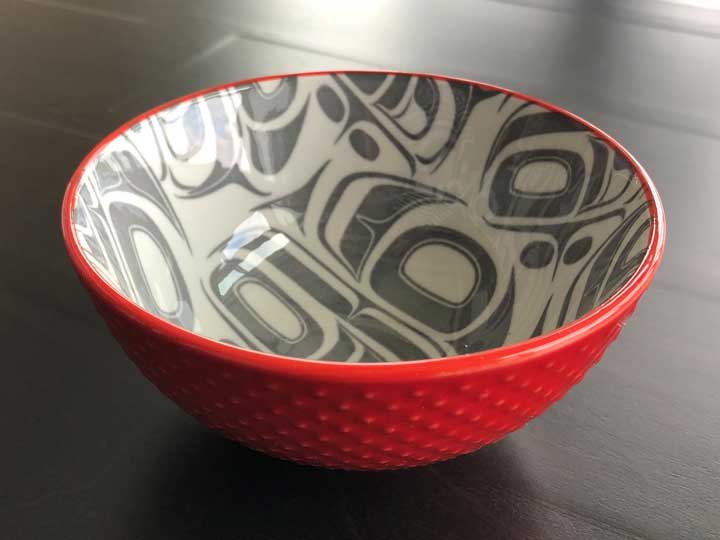
It's time.
This photo is of a gift given to the GTB from the Cascadia region in British Columbia. The handcrafted bowl is called Transforming Eagle, by Indigenous artist Ryan Cranmer. Eagles represent the "power within you, within each of us, to change ourselves and the world around us."
The Prophecy of the Seven Fires of the Anishinaabe
tells of a time when the waters become so poisoned that the animals and plants fall sick and begin to die. Much of the forests and prairies will be gone, so the air begins to lose the power of life. In this time, the time of the Seventh Fire, a new people will emerge from the clouds of illusion. They will be given a choice between two paths: a green path of life and a charred path of death. If they choose the green path, they will need to retrace their steps to pick up that which has been lost, broken, or forgotten. Important stories will be returned to them. They will soar with the White Eagle, bring wisdom, remember the Original Instructions and find strength in the ways of the circle of life.
Modern science has its own version of the warning in this prophecy – the Doomsday Clock. Maintained since 1947 by the members of the Bulletin of the Atomic Scientists, the clock is a metaphorical representation of how close humanity is to destroying the world through nuclear weapons, climate change, and other means. The clock's original setting in 1947 was
It is 90 seconds to midnight.
"Ominous trends continue to point the world toward global catastrophe. The war in Ukraine and the widespread and growing reliance on nuclear weapons increase the risk of nuclear escalation. In 2023, Earth experienced its hottest year on record, and massive floods, wildfires, and other climate-related disasters affected millions of people around the world… Everyone on Earth has an interest in reducing the likelihood of global catastrophe."
It's time to #ChangeTheStory.
EXPLORE 7-GENERATION GTB
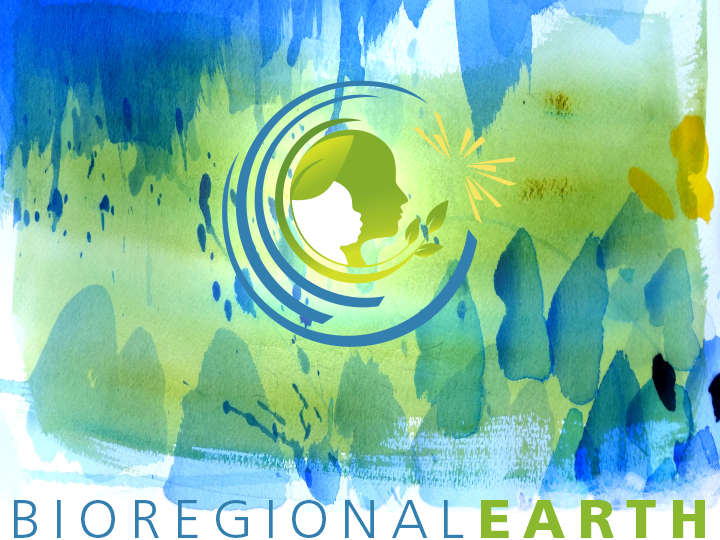
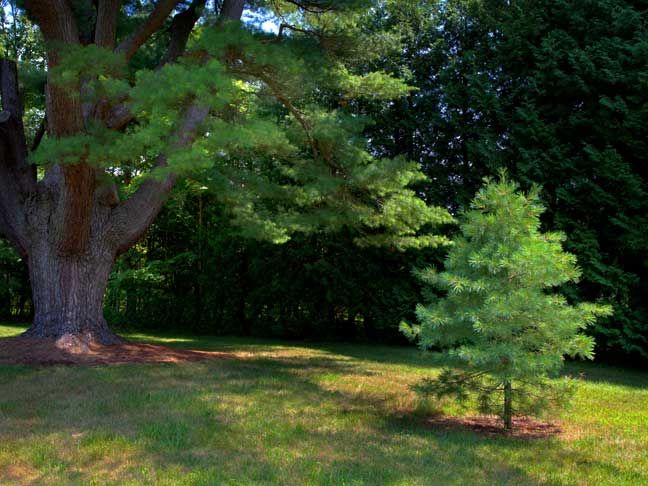
INTERGENERATIONAL

BIOREGIONAL
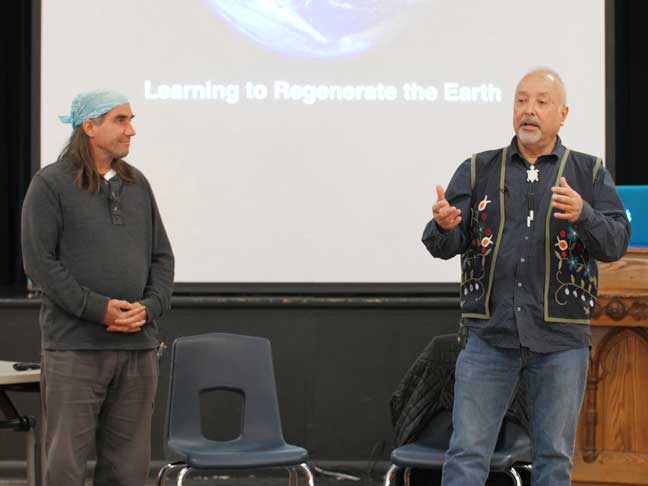
VIDEOS
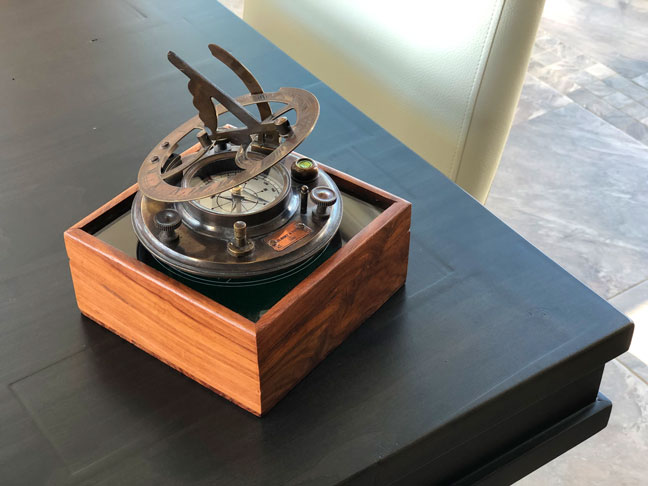
TABLE TALK
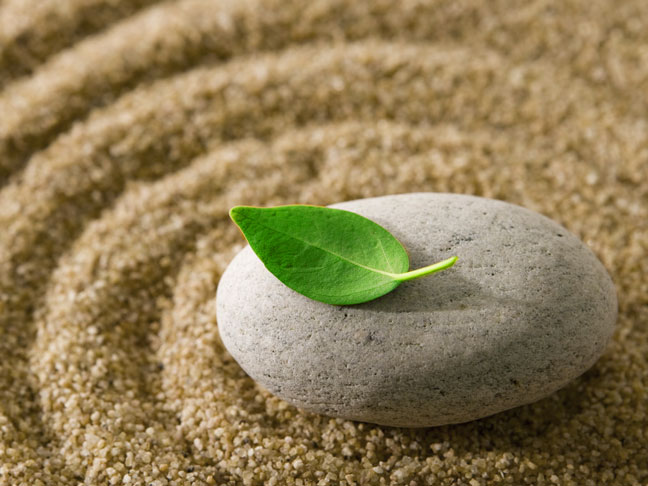
EVENTS
